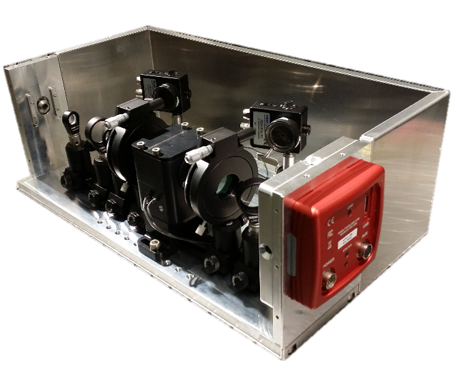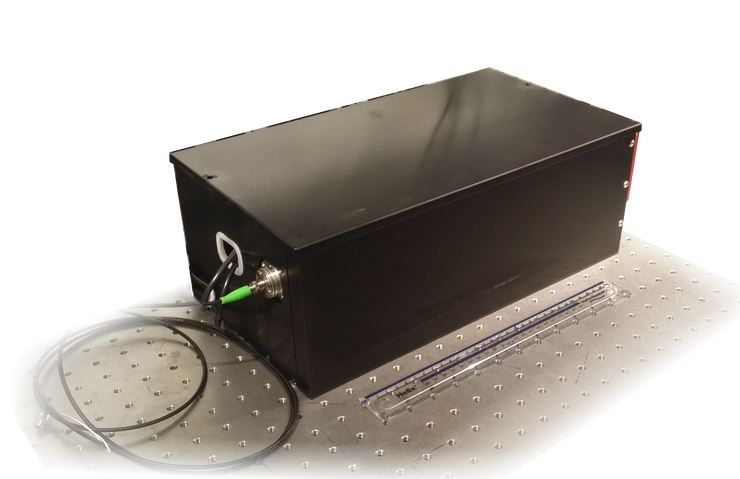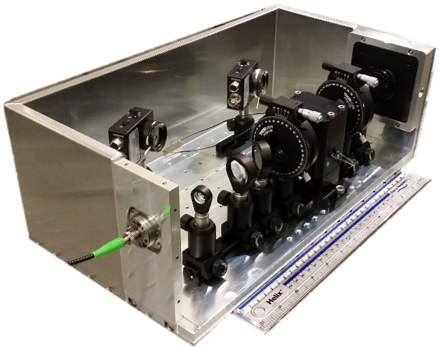Bespoke LC analyser

OMPA is a portable optical analyser of liquid crystal cells and modulators. It is an ideal tool for R&D research in liquid crystal materials, displays, AR/VR applications, optical waveplates or light modulators.
- OMPA can be customised further, depending on the requirements.
- Developed by our team of skilled researchers
- User friendly Interface that provides high quality analysis and snapshots
- We offer a liquid crystal cell and device characterisation service in our lab for researchers in academia and industry.
The following short video presentation highlights our LC tools.


Optical Multi–parameter Analyser, OMPA, is all-in-one instrument measuring key parameters that determine the performance, stability and uniformity of liquid crystal based devices. Controlled by an easy-to-operate user interface, this essential tool and companion provides a high quality analysis and a quick snapshot of the performance of the already assembled devices.
Using single optical assembly and a single LC sample, it determines the following LC parameters:
- Splay and bend elastic constants (K1 and K3)
- Rotational viscosity (γ1)
- Combination of Leslie viscosity coefficients (α4+ α5)
- Wide area mapping of LC layer thickness and alignment
- Pre-tilt and voltage threshold
- Anchoring strength
In addition, the sample holder with thermal control enables measuring LC properties in a wide temperature range. Easy-to-operate graphical user interface controls the measuring apparatus and performs the data analysis. Standard LC cells or unique already encapsulated LC hybrid samples can be characterised. Operates with a fiber coupled laser so that a variety of laser wavelengths can be used – chosen depending on sample requirements. Software and the associated code can also be ordered as a separate item.


OMPA as a tool to aid characterisation and development of:
- new liquid crystals
- study liquid crystal colloids with nanoparticles
- new liquid crystal devices
- hybrid optical systems combining active layers and liquid crystals
- and evaluation how good, stable, reproducible the liquid crystals cells are
OMPA Case Studies:
Case 1: OMPA for colloidal liquid crystal mixtures
OMPA can characterise more complex and non-standard liquid crystal systems, for example colloidal suspensions of plasmonic and ferroelectric nanoparticles in liquid crystals. Such mixtures were developed as a route to enhance liquid crystals, by increasing their electro-optic response or nonlinear response, reducing voltage threshold or increasing birefringence [1].
The interest in these colloidal systems continues [2] and it has recently been suggested that the nanoparticles can sweep out the ions from their host [3]. The presence of ions, with different dynamics, has significant effect on the performance of liquid crystals in displays and modulators. Being able to quickly evaluate the performance of such systems is essential to determine their suitability for R&D. OMPA has been successfully used to characterise colloidal liquid crystals, capturing their elastic constants, viscosity, pretilt and anchoring energy. It is capable of confirming the quality of alignment and the long term stability. The figure below demonstrates OMPA extracting the parameters of the doped liquid crystal and of the cell. In this particular case, it was a mixture of a liquid crystal (LC 18523) and 1%wt BaTiO3 (BTO) nanoparticles.

The maps above show the liquid crystal thickness in meters(left), pretilt angle (middle) and anchoring energy (right). The sample measurement grid is 6x6 mm. The red square indicates that selected regions can be chosen for individual measurements.
[1] "Improved photorefractive response in liquid crystals with ferroelectric nanoparticles" M. Kaczmarek, A. Dyadyusha, O. Buchnev, Yu. Reznikov, V. Reshetnyak, Nonlin. Opt. & Quant. Opt. 35, 217 (2006). [2] “Uncovering the mystery of ferroelectricity in zero dimensional nanoparticles”, Y. A. Barnakov, U. Idehenre, S. Basun, T.A. Tysond, D. R. Evans, NanoScale Adv, 1, 664 (2019) [3] Y. Garbovskiy, “Nanomaterials in Liquid Crystals as Ion-Generating and Ion-Capturing Objects”, Crystals, 8, 264 (2018)
Case 2: Uniformity, interactions with surfaces and temperature dependence
When liquid crystal cells and displays are produced on an industrial scale, their uniformity and the quality of alignment is checked with specialised equipment. However, R&D in liquid crystals often involves exploring new liquid crystals, substrates, aligning layers or electrode geometries. The successful development of such prototypes requires compact and fast method to characterise the cells that are in the early stages of development.
OMPA has been successfully used in industry in characterising systems for AR/VR applications, which is one of the most promising and rapidly expanding areas. The maps below show typical examples of high uniformity cells – capturing how uniform is the thickness, pretilt and anchoring.
All these parameters can be tracked at a wide range of temperatures to determine how they change at o high or low temperatures. The figure below left shows a uniform cell with high optical quality. The viscosity changes with temperature were measured in this cell and the results are shown in the graph (bottom right).

Case 3: Asymmetric and photovoltaic cells
Some new liquid crystal devices have asymmetric geometry, where two substrates are made of different materials or have different layers deposited on them, for example, a photoconducting or a photoalignment layer on one substrate. OMPA is capable of characterising asymmetric cells. It can capture different pretilts on the two substrates as well as different magnitudes of the anchoring energy, detecting if anchoring is strong or weak. This has been tested on a new concept, photovoltaic-liquid crystal cells, developed in an R&D project with University of Strasbourg and Conectus Alsace.
The cells include PEDOT;PSS layer (top row) and PEDOT;PSS with a single photovoltaic layer (PVU)

Case 4: Capturing the stability and the durability of cells
When using newly synthesised liquid crystals, doped liquid crystals or experimental alignment layers, it is vital to determine the long-term stability.
For example, photoalignment technique is a popular method to use, in particular for liquid crystal polymers. It is fast, different patterns can be defined and it avoids contact rubbing. However, when photoalignment layers based on azobenzene are used for dynamic reorientation of nematic liquid crystal using visible or UV light, with time the performance of such dynamic switch can deteriorate with time. Similar change in performance can be present in other, experimental designs of cells.
OMPA can capture the non-uniform regions, detecting for example the difference in alignment in the areas that were exposed to high intensity laser beams. If extracting the parameters is still important, it can choose only the regions where alignment is good and thus map in detail the cell that was exposed to different, external stimuli.
The figure below includes a cell with a nematic LCs, with one substrate covered by PI and the other by a photoalignment layer.
